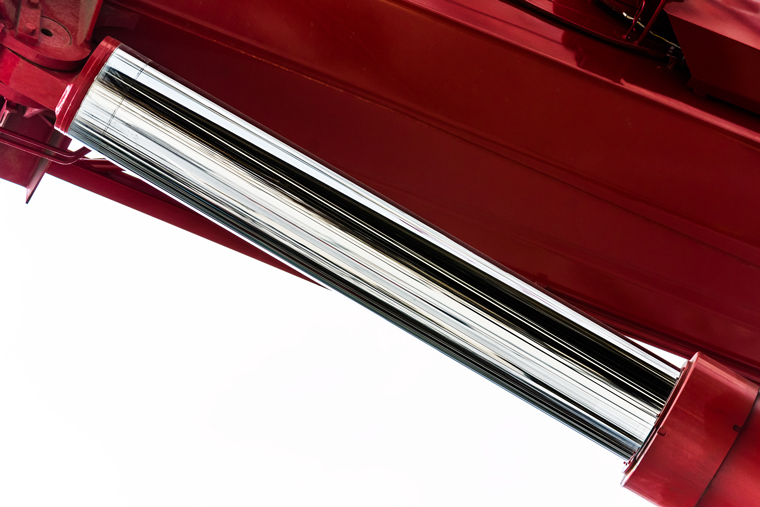

What Happens When Piston Rods Are Damaged?

What is the piston rod of a cylinder?
The piston rod is a basic and significant component of every pneumatic, hydraulic, or mechanical cylinder. The piston rod normally consists of a length of strong chrome-plated steel that has been precisely machined, and it transmits the force generated by the piston to the working part of the machine.
-
This damage can eventually lead to hydraulic cylinder failure. The cylinder may leak if the seals on the cylinder rod are damaged.
-
Damage to the cylinder rod wiper can allow particles to enter the cylinder, breaking the piston rod and piston seals and perhaps dispiriting the cylinder components.
-
If the piston rod breaks while the piston rises, it will continue to rise until it permanently jams into the cylinder head. The fractured rod may pierce through the engine block if it breaks as the piston descends.
-
Physical harm to the cylinder mounts and other external components, such as bending or cracking, might weaken the base material and cause a devastating mechanical failure.

Common causes of cylinder failure
-
Contaminated fluid is one of the most frequent causes of hydraulic cylinder failure. Foreign, abrasive particles can scratch the interior of the cylinder, degrade the finish on the cylinder rods and choke ports, and harm seals and fittings when they get stuck in the fluid.
-
A rough score on a rod is necessary to ensure the cylinder rod's state. The seals' shortened lifespan and vulnerability to rough spots on the piston rod make frequent replacements necessary. Additionally, carefully examine the piston rod polish.
-
A cylinder can be attached in a variety of methods, including by flange, piston rod, or barrel eyes connected in series or parallel, and more. Excessive stress is placed on the mounting connection when a cylinder is overloaded or out of alignment, which causes faster wear or even failure. Inadequate movement and slope can be caused by worn, chipped, or damaged rod eye bushings and bearings.
-
Inadequate roundness and straightness will result in oil seal deflection and wear.
Roundness: tolerance × ½
Straightness:
<Φ20mm: max 0.25/1000mm
≧Φ20mm: max 0.2/1000mm
Prevention of cylinder failure due to piston rod
-
Using the right piston rods:Bent rods can lead to the failure of hydraulic cylinders because they change the load exerted on seals. The inappropriate diameter of the rod or improper use of the cylinder can both cause rod failure.
-
Selecting the right piston rod finish:Insufficient levels of lubrication, a finish that is too smooth, can cause the seal to wear out. A too-rough finish may cause leakage past the seal.
You should never underestimate the significance of your cylinder rod; it will come in handy. The piston rod transmits the force produced by the cylinder's piston in addition to acting as the point of contact between the cylinder and your machine. Before correctly selecting and building the piston rod, you must understand the various failure points. Common cylinder issues include the rod being the wrong size for the job, rod thread failure, rod dents harming the seal, and rod thread corrosion.
If the surface of the shaft is not smooth enough, the oil seal will be scratched easily, which will shorten the life and cause rusting. The surface roughness of the shaft of Golden Asia is max Ra0.2μm. The average is Ra0.12-15μm, and the lowest is Ra0. 06μm. Insufficient concentricity and straightness will cause deflection and wear of oil seals

What is the disadvantage of hydraulic cylinder?
One of the main disadvantages of hydraulic cylinders is the potential for leakage. Hydraulic cylinders use a hydraulic fluid to transfer force and energy, and if the seals or other components of the cylinder are not properly maintained, it can result in leaks. Leaks can lead to decreased performance, increased energy consumption, and environmental hazards.
Problems encountered in hydraulic and pneumatic cylinders:
-
Shaft damage will leak oil and air
-
Rusted shaft will break easily.
-
Improper selection of shaft material, causing surface scratches and rusting, resulting in fracture.
- Piston Rod Chrome-plating Solution and Chrome Plating Method (Horizontal and Conventional) Affect the Lifespan of the Shaft
- Know The Distinctions Between Different Types of Piston Rod
- Where are induction hardened chromed shaft and SAE4140 hard chrome bar be used?
- What Are the Advantages and Disadvantages of Hydraulic Cylinders?
- What is the difference between welded pipe and seamless pipe?
- The signing ceremony for cooperation between Golden Asia and Salzgitter Mannesmann holding
- Why Do Hydraulic Cylinders and Pneumatic Cylinders Usually Use Seamless Tube?
- Elevate Your Operation with the Right Hydraulic Cylinder Supplier
